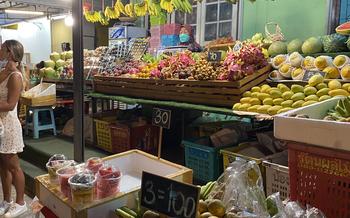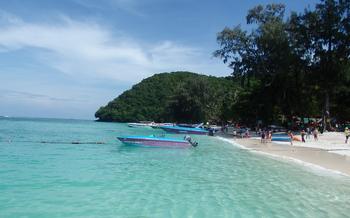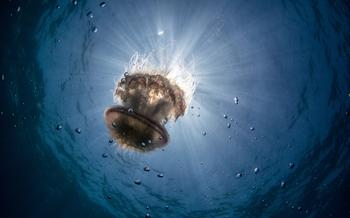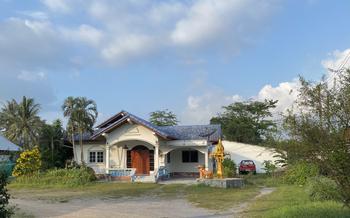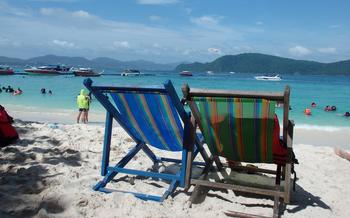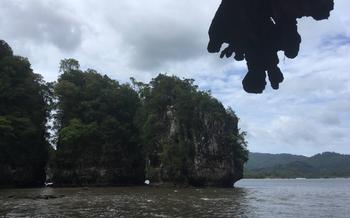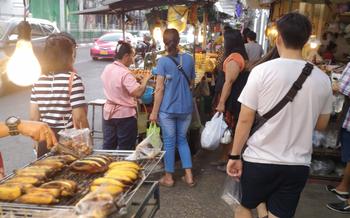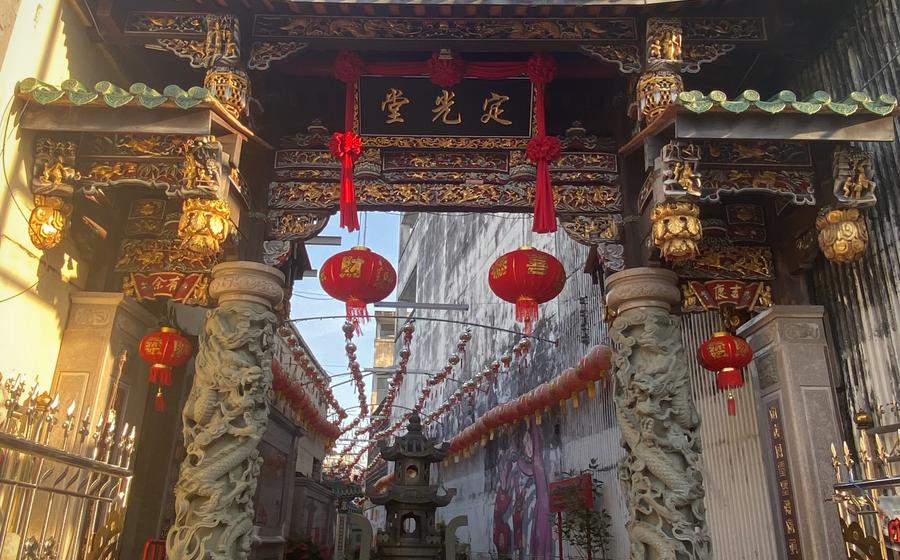
Sea Gypsy Village at Rawai
- The Sea Gypsy Village at Rawai: A Unique Experience
- Getting There: How to Reach the Sea Gypsy Village
- Distance from Phuket Town and Other Popular Areas
- Transportation Options: Car, Taxi, Tuk-Tuk, or Tour
- Cost of Transportation and Parking
- Exploring the Village: A Walk Through History
- Boat Tours: Discovering the Hidden Bays and Islands
- Seafood Delights: Savoring the Sea Gypsy Cuisine
- Floating Restaurants and Local Eateries
- Prices and Recommendations for Must-Try Dishes
- Vegetarian and Vegan Options Available
- Tips for Vegetarians and Vegans
- Cultural Performances: A Glimpse into Moken Traditions
- Shopping for Souvenirs: Unique Handicrafts and Treasures
- Photography Opportunities: Capturing the Village Charm
- Local Customs and Etiquette: Respecting the Moken Culture
- Visiting the Village with Kids: A Fun-Filled Day Out
- Best Time to Visit: Weather and Seasonal Factors
- Budgeting for the Experience: Cost Considerations
- Accommodation Options: Where to Stay Nearby
- Responsible Tourism: Minimizing Your Environmental Impact
- Insider Tip: Unveiling a Hidden Gem
The Sea Gypsy Village at Rawai: A Unique Experience
Nestled along the southern coast of Phuket, Thailand, lies the charming Sea Gypsy Village at Rawai, a vibrant community steeped in history and tradition. Home to the Moken people, also known as the "Sea Nomads," this village offers a unique glimpse into a way of life that has remained largely unchanged for centuries.
The Moken people, with their rich cultural heritage, have adapted to a life intertwined with the sea. Their traditional fishing practices, passed down through generations, showcase their deep connection to the ocean. The village serves as a hub for the local community, where residents uphold their cultural identity while navigating the challenges of modern society.
Visiting the Sea Gypsy Village is an immersive experience that allows travelers to witness firsthand the unique customs and practices of the Moken people. From their traditional houses built on stilts over the water to the colorful boats that line the shores, the village exudes an atmosphere of authenticity and charm, making it a must-visit destination for anyone seeking a glimpse into the heart of Thailand's diverse cultural tapestry.
Getting There: How to Reach the Sea Gypsy Village
The Sea Gypsy Village at Rawai is conveniently located just a short distance from Phuket Town, making it easily accessible for visitors. Whether you prefer to explore independently or join an organized tour, there are several transportation options available to suit your needs and budget.
Distance from Phuket Town and Other Popular Areas
The Sea Gypsy Village is situated approximately 16 kilometers (10 miles) south of Phuket Town, the island's main city. From other popular tourist areas such as Patong, Karon, and Kata, the distance ranges from 20 to 30 kilometers (12 to 19 miles).
Transportation Options: Car, Taxi, Tuk-Tuk, or Tour
Car: If you're renting a car or motorbike, driving to the village is a great way to explore the island at your own pace. Simply follow the signs from Phuket Town or use a GPS navigation system.
Taxi: Taxis are readily available in Phuket and can be hailed on the street or booked in advance. The fare from Phuket Town to the village typically ranges from 300 to 500 Thai baht (10 to 16 USD).
Tuk-Tuk: Tuk-tuks, the iconic three-wheeled vehicles, are another popular option for getting around Phuket. While they may be slower than taxis, they offer a more adventurous and local experience. The cost of a tuk-tuk ride from Phuket Town to the village is usually around 200 to 300 Thai baht (7 to 10 USD).
Tour: Joining an organized tour is a convenient option for those who prefer a hassle-free experience. Many tour operators in Phuket offer day trips or half-day trips to the Sea Gypsy Village, often combined with visits to other nearby attractions. Prices typically range from 500 to 1,000 Thai baht (16 to 32 USD) per person, including transportation, boat tours, and lunch.
Cost of Transportation and Parking
Parking is available at the village for a small fee, typically around 20 to 50 Thai baht (0.7 to 6 USD) per vehicle. If you're driving, be sure to arrive early to secure a spot, as the parking lot can fill up quickly during peak tourist season.
Exploring the Village: A Walk Through History
As you step into the Sea Gypsy Village at Rawai, you'll be transported back in time. The village, built on stilts over the turquoise waters, is a testament to the resilience and ingenuity of the Moken people. Their homes, made from wood and bamboo, are simple yet sturdy, reflecting their close connection to the sea.
Take a stroll through the narrow walkways, lined with colorful houses and shops. Observe the villagers going about their daily lives, repairing fishing nets, weaving baskets, or preparing for their next fishing expedition. The air is filled with the sound of laughter, the smell of freshly caught seafood, and the gentle lapping of the waves against the stilts.
Engage with the friendly locals, who are always happy to share stories about their culture and way of life. Browse their handmade crafts and souvenirs, from seashell jewelry to woven mats. Each item is a unique work of art, showcasing the Moken people's creativity and connection to the sea.
Remember to be respectful and mindful when interacting with the villagers. Ask permission before taking photos or videos, and avoid disturbing their daily activities. Embrace the opportunity to learn about their fascinating culture and traditions, and leave with a deeper appreciation for the Sea Gypsy way of life.
Boat Tours: Discovering the Hidden Bays and Islands
Boat tours are a must-do activity when visiting the Sea Gypsy Village at Rawai. These tours offer a unique opportunity to explore the stunning bays and islands that surround the village, each with its own unique charm and attractions.
Longtail boats are traditional Thai boats that are commonly used for transportation and fishing. They are a great option for a leisurely tour of the surrounding waters, allowing you to soak up the scenery and relax on the boat's deck.
For a more thrilling experience, opt for a speedboat tour. These tours typically cover a larger area and allow you to visit more islands in a shorter amount of time. They also offer the opportunity to engage in water sports such as snorkeling and diving.
Coral Island, also known as Koh Hae, is a popular destination for boat tours from Rawai. The island is home to a beautiful coral reef, making it an ideal spot for snorkeling and diving. You can also relax on the island's white-sand beaches or explore the lush jungle interior.
Koh Maiton is another popular island destination. This island is known for its pristine beaches, crystal-clear waters, and vibrant marine life. It is a great place to go snorkeling, diving, or simply relax on the beach.
The cost of boat tours varies depending on the type of boat, the duration of the tour, and the number of people in your group. Expect to pay around 1,000 to 2,000 baht for a longtail boat tour and 2,000 to 3,000 baht for a speedboat tour.
No matter what type of boat tour you choose, you are sure to have an unforgettable experience exploring the hidden bays and islands that surround the Sea Gypsy Village at Rawai.
Seafood Delights: Savoring the Sea Gypsy Cuisine
Indulge your taste buds with the tantalizing seafood delicacies that the Sea Gypsy Village is renowned for. Fresh catches of the day are transformed into mouthwatering dishes, showcasing the culinary expertise of the Moken people. Grilled lobster, with its succulent meat and delicate flavor, is a must-try. Crab, prepared in a variety of styles, offers a burst of flavors that will leave you craving for more. For a taste of the local catch, sample the grilled fish, which is simply seasoned and cooked to perfection, allowing the natural flavors to shine through.
Floating Restaurants and Local Eateries
Enjoy your seafood feast in a unique setting at one of the floating restaurants that line the village's shores. These rustic eateries offer panoramic views of the sea and the village, creating a truly immersive dining experience. Alternatively, venture into the heart of the village and savor the authentic flavors at local eateries, where you can interact with the friendly villagers and learn about their culinary traditions.
Prices and Recommendations for Must-Try Dishes
Seafood prices at the Sea Gypsy Village are generally reasonable, allowing you to indulge in a culinary adventure without breaking the bank. For a memorable meal, try the grilled lobster, which typically costs around 500-600 baht (approximately $15-18). Crab dishes range from 200-300 baht ($6-9), depending on the size and type of crab. Grilled fish is a budget-friendly option, usually priced between 100-200 baht ($3-6).
Vegetarian and Vegan Options Available
While seafood is the highlight of the Sea Gypsy cuisine, vegetarians and vegans can also find delicious options to satisfy their taste buds. Many restaurants offer tofu and vegetable dishes, ensuring that everyone can enjoy a satisfying meal at the village.
Tips for Vegetarians and Vegans
To ensure a fulfilling vegetarian or vegan experience at the Sea Gypsy Village, consider the following tips:
- Ask about vegetarian and vegan options when ordering at restaurants.
- Look for dishes that feature tofu, vegetables, or fruits as the main ingredients.
- Be prepared to explain your dietary preferences to the restaurant staff, as they may not be familiar with vegetarian or vegan cuisine.
- Consider bringing your own snacks or meals if you have specific dietary requirements.
Cultural Performances: A Glimpse into Moken Traditions
The Sea Gypsy Village at Rawai offers visitors a unique opportunity to experience the vibrant culture of the Moken people through traditional dance and music performances. These performances showcase the rich heritage and customs of the community, providing a glimpse into their way of life.
Traditional Dance and Music:
The Moken people have a strong tradition of dance and music that is deeply rooted in their culture. Visitors to the village can witness captivating performances that feature rhythmic beats, melodious vocals, and graceful movements. These performances often tell stories of the Moken's history, their connection to the sea, and their daily lives.
Fire Dancing:
One of the highlights of the cultural performances is the mesmerizing fire dance. This traditional dance involves skilled performers who twirl and manipulate flaming torches, creating a captivating spectacle. The fire dance is a symbol of strength, courage, and the Moken's deep connection to the elements.
Schedule and Location:
Cultural performances at the Sea Gypsy Village are typically held in the evening, providing a perfect way to end a day of exploration. The performances are usually held in a designated area within the village, allowing visitors to gather and enjoy the show.
Tips for Capturing the Best Photos and Videos:
To capture the best memories of your visit, consider the following tips:
- Arrive early to secure a good spot for viewing the performance.
- Use a camera with a fast shutter speed to capture the dynamic movements of the dancers.
- Experiment with different angles and perspectives to create unique and interesting shots.
- Be respectful of the performers and avoid using flash photography.
Shopping for Souvenirs: Unique Handicrafts and Treasures
The Sea Gypsy Village at Rawai is a treasure trove of unique handicrafts and souvenirs that reflect the vibrant culture of the Moken people. From intricate seashell jewelry to colorful woven textiles, there's a wide variety of handmade items to choose from.
When shopping for souvenirs, be sure to engage with the local artisans and learn about their techniques and inspirations. Bargaining is a common practice, but do so respectfully and with a smile.
Your purchases not only support the local economy but also help preserve the traditional crafts and skills of the Moken community. Whether you're looking for a unique gift or a memento of your visit, the Sea Gypsy Village offers an authentic and meaningful shopping experience.
Here are some tips for shopping in the village:
- Be prepared to bargain, but do so respectfully.
- Ask the artisans about their products and their process.
- Look for unique and handmade items that are not mass-produced.
- Support the local economy by buying directly from the artisans.
- Consider purchasing souvenirs that are made from sustainable materials.
Photography Opportunities: Capturing the Village Charm
The Sea Gypsy Village at Rawai offers a rich tapestry of photo opportunities, capturing the essence of the Moken culture, the vibrant colors of the fishing boats, and the breathtaking landscapes. The best time to capture the village's charm is during the golden hours of sunrise and sunset when the sky paints the scene with warm hues, creating a magical ambiance.
When photographing the village, remember to be respectful of the locals' privacy. Always ask permission before taking photos or videos, and be mindful of their daily activities. The villagers are usually happy to pose for photos, but it's important to be courteous and avoid causing any disruption.
For Instagram-worthy shots, head to the pier, where you can capture the colorful fishing boats bobbing on the turquoise waters, creating a vibrant composition. The stilt houses, with their unique architecture, also make for interesting subjects.
To capture the essence of the Moken way of life, spend time observing the villagers as they go about their daily routines. Photograph them mending their nets, preparing their boats for fishing, or cooking their meals. These candid shots will give you a glimpse into their unique culture.
The Sea Gypsy Village is a photographer's paradise, offering endless opportunities to capture the beauty of this unique community. So bring your camera, embrace the Moken culture, and create lasting memories of your visit.
Local Customs and Etiquette: Respecting the Moken Culture
When visiting the Sea Gypsy Village at Rawai, it is essential to be mindful of local customs and etiquette to ensure a respectful and enjoyable experience for both visitors and villagers. Here are some guidelines to keep in mind:
-
Dress Code: Dress modestly and appropriately when visiting the village. Avoid wearing revealing or skimpy clothing, as it may be considered disrespectful.
-
Greetings: When meeting the villagers, greet them with a friendly "Sawasdee" (pronounced "sa-wat-dee"), which is the traditional Thai greeting. A slight bow or wai (placing your hands together in a prayer-like position) is also a respectful gesture.
-
Asking Permission: Before taking photos or videos of the villagers or their homes, always ask for their permission. Respect their privacy and do not take photos or videos without their consent.
-
Respecting Privacy: The villagers lead a simple and private life. Be respectful of their privacy and avoid intruding on their daily activities or taking photos without their permission.
By following these guidelines, you can show your respect for the Moken culture and help preserve the unique way of life in the Sea Gypsy Village at Rawai.
Visiting the Village with Kids: A Fun-Filled Day Out
Visiting the Sea Gypsy Village with kids can be a delightful experience for both children and adults. Here are some tips to make the most of your family outing:
-
Plan Activities for Kids: Keep your little ones entertained with age-appropriate activities such as boat rides, swimming, and beach games. The village offers a safe and shallow swimming area where kids can splash around and have fun.
-
Choose Child-Friendly Restaurants: Opt for restaurants that cater to families, offering kid-friendly menus and high chairs. Some eateries in the village also have playgrounds or designated play areas for children.
-
Keep Kids Engaged: Engage your children's curiosity by explaining the unique culture of the Moken people, their fishing practices, and the importance of preserving their traditions. Encourage them to ask questions and learn about the village's history and way of life.
-
Ensure Safety and Supervision: While the village is generally safe for kids, ensure they are supervised at all times, especially near the water. Life jackets are recommended for boat rides and swimming activities.
Best Time to Visit: Weather and Seasonal Factors
The best time to experience the wonders of the Sea Gypsy Village at Rawai is during the dry season, which runs from November to April. During these months, the weather is at its most pleasant, with warm and sunny days and cool evenings. The skies are clear, providing excellent visibility for boat tours and snorkeling excursions. The seas are also calmer, making it ideal for exploring the surrounding islands and bays.
While the village is open year-round, it's worth noting that the monsoon season, which lasts from May to October, can bring heavy rainfall and strong winds. While this may not completely hinder your visit, some activities, such as boat tours, may be affected or canceled due to safety concerns. Additionally, the village may experience flooding during this time, making it challenging to navigate.
To avoid crowds and enjoy a more intimate experience, plan your visit during the shoulder months, which fall between the dry and wet seasons. This period typically offers more favorable weather conditions while attracting fewer tourists.
Budgeting for the Experience: Cost Considerations
Visiting the Sea Gypsy Village at Rawai is a relatively affordable experience, making it accessible to travelers of all budgets. Here's a breakdown of the expected costs:
-
Entrance Fee: There is no entrance fee to visit the village itself, but some activities and attractions may have a small fee. For example, a boat tour to Coral Island typically costs around 500-1,000 THB per person.
-
Boat Tours: Prices for boat tours vary depending on the duration, destination, and type of boat. A basic longtail boat tour to Coral Island might cost around 500-600 THB, while a speedboat tour to more remote islands could cost up to 2,000-3,000 THB.
-
Food and Beverage: Seafood dishes at the floating restaurants and local eateries typically range from 100 to 300 THB per plate. Drinks like fresh coconut juice or soft drinks cost around 50-100 THB.
-
Souvenirs: Handicrafts and souvenirs can be purchased from the village shops, with prices varying depending on the item. Small souvenirs like seashells or keychains can cost as little as 50-100 THB, while larger items like clothing or jewelry can cost several hundred THB.
-
Transportation: If you're staying in Phuket Town or another nearby area, transportation to the village by taxi or tuk-tuk typically costs around 300-500 THB one way. Renting a car for the day can be a convenient option, with prices starting from around 1,000 THB per day.
To save money, consider packing your own snacks and drinks, opting for budget-friendly dishes at local eateries, and negotiating prices for souvenirs. Visiting during the shoulder season (May-June and September-October) can also help you avoid peak-season prices.
Accommodation Options: Where to Stay Nearby
Rawai and its surrounding areas offer a range of accommodation options to suit different budgets and preferences. For a luxurious stay, consider the beachfront resorts with private villas and stunning ocean views. Mid-range hotels and guesthouses provide comfortable and affordable options, often with swimming pools and tour desks. Backpackers and budget travelers can opt for hostels or guesthouses with shared dormitories or private rooms.
To experience the local way of life, homestays are a great option. These family-run guesthouses offer a chance to immerse yourself in the Moken culture and learn about their traditions firsthand. Many homestays also offer cooking classes, boat trips, and other activities to enhance your stay.
Whether you prefer the comfort of a resort, the affordability of a guesthouse, or the authenticity of a homestay, you'll find suitable accommodation options in Rawai. Remember to book in advance during peak season to avoid disappointment, especially if you have specific requirements or preferences.
Responsible Tourism: Minimizing Your Environmental Impact
As a traveler, it's essential to be mindful of your impact on the environment, especially when visiting delicate ecosystems like the Sea Gypsy Village. Here are some tips for practicing responsible tourism:
-
Choose eco-friendly transportation options: Opt for walking, cycling, or taking public transportation instead of renting a car. This helps reduce air pollution and traffic congestion.
-
Use eco-friendly sunscreen: Many conventional sunscreens contain chemicals that can harm marine life. Choose mineral-based, reef-safe sunscreen that won't damage the coral reefs.
-
Avoid plastic waste: Bring your own reusable water bottle, shopping bags, and containers to minimize single-use plastic waste. Dispose of trash responsibly in designated bins.
-
Respect the marine environment: When snorkeling or diving, avoid touching or disturbing the coral reefs and marine life. Adhere to designated swimming areas and avoid feeding the fish.
-
Support local conservation efforts: Contribute to the preservation of the village and its surroundings by supporting local conservation organizations. Consider volunteering your time or making a donation.
Insider Tip: Unveiling a Hidden Gem
While the Sea Gypsy Village at Rawai is a must-visit destination, there are other hidden gems waiting to be explored in the vicinity. Take a short boat ride to Coral Island, a picturesque island with crystal-clear waters and vibrant coral reefs. Snorkeling and diving enthusiasts can marvel at the underwater world teeming with colorful marine life.
Venture beyond the village and discover the quieter beaches and bays that dot the coastline of Rawai. Seek solace and tranquility as you soak up the sun, swim in the turquoise waters, and immerse yourself in the serenity of nature. Remember, the true essence of Rawai lies in embracing the local culture, engaging with the villagers, and learning about their unique way of life. Embrace the opportunity to connect with the Moken people, listen to their stories, and gain a deeper understanding of their rich traditions.
